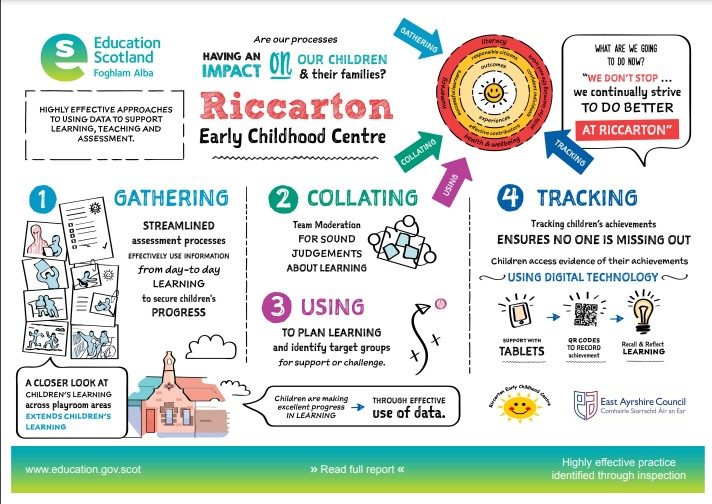Ways we can do this:
Careful observation of the child within daily routines and during play inside and![]() outdoors, supported by sensitive interactions allows practitioners to tune into the child’s interests.
outdoors, supported by sensitive interactions allows practitioners to tune into the child’s interests.
Playing alongside the child can provide further information about the child’s knowledge base and skill levels, allowing the adult to appropriate challenge in the moment and inform future planning.
Gathering information from families through conversations will develop the accuracy of a child’s personal plan and regular timetabled review will ensure the document is relevant and meaningful to the child.
Time must also be given to evaluate strategies being implemented to support children for their effectiveness and relevance. If something is not having an impact, then consider as a team what could be put in place instead.
Settings can make use of tracking facilities on e-journals, using them effectively to communicate to parents and to assess progress in learning.
A consistent use of the language of learning (including learning dispositions) with children so they can identify what they are learning and how their learning has developed over time.
Staff regularly discuss children’s interests and progress in learning as part of professional dialogue. This knowledge is then implemented in changes to the environment to extend and challenge learning or through intentional promotion planning for specific learning experiences.
When gathering evidence of learning progression, practitioners should consider:
Ensuring focus of observations includes documenting the learning that took place and what the adult did to support and extend the learning.
Adding a variety of evidence of learning into learning journeys or journals, e.g. written observations, film clips, photos, examples of work with notations, WOW moments with comments, and examples of achievements from home. Giving a full picture of the child’s learning experiences and their progression in learning.
Using a floor book or learning wall to capture progression of group learning activities. Examples of this may include photographs, drawings and child’s voice, with adults making the learning visible for the children during daily routines.
When using tracking documents, practitioners should consider:
Completing trackers & Developmental Overviews (see tabs at the bottom of this page) to demonstrate where the child is in their learning and how they are progressing.
Trackers are stored for easy access to enable practitioners to update on-the-go.
Tracking and monitoring are an integral part of daily practice and longer term tracking is timetabled into the yearly plan.
Progress and attainment conversations are planned termly.
Moderation of these processes are timetabled in to ensure equity and high quality for all.
Trackers are used to support planning by highlighting gaps in provision or where children’s current interests lie, rather than as a tick-list.

